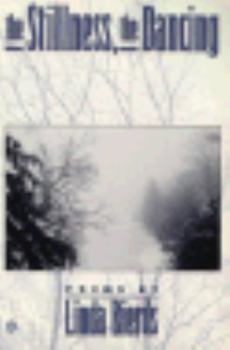The Stillness, the Dancing: Poems
No Synopsis Available.
Format:Paperback
Language:English
ISBN:0805007660
ISBN13:9780805007664
Release Date:January 1988
Publisher:Owl Publishing Company
Length:75 Pages
Weight:0.25 lbs.
Dimensions:0.3" x 5.5" x 8.3"
Related Subjects
PoetryCustomer Reviews
1 rating
Richly imaginative and elegantly crafted poems.
Published by Thriftbooks.com User , 27 years ago
Linda Bierds brings something of a fiction-writer's sensibilities to her poems, which are as rich in character and narrative as they are in imagery and metaphor. Rather than drawing primarily on her own experiences, Bierds shapes her poems through the imaginative transformation of facts and legends taken from history, science, and art. She writes almost exclusively in the third person, using an omniscient narrator's voice, with no obvious "persona" we can identify as the poet. This is a somewhat risky technique, particularly when combined with the kinds of subject matter she choses, but the poems never sound "academic" or "cold" because Bierds enters so completely into the imaginative lives of her characters. Her interests cover an impressive range: THE STILLNESS, THE DANCING includes poems about polar exploration, Rembrandt, rhodolite mining, the discovery of the rabies vaccine, and the settlement of the American west. Bierds apparently spent part of her childhood in Alaska and lived in the Pacific Northwest, and a number of these poems reflect her interest in that region's history and people. "The Klipsan Stallions," for example, is a lyrical narrative about a shipwreck off the Pacific Coast in 1891 and the amazing rescue of its sailors by specially trained horses. Presented as a true story ("It was 3 A.M., the third of November, 1891.") and framed as a narrative, the poem is rich in vivid images and cinematic detail, and informed by Bierds' imaginatively empathetic focus on the inner lives of her characters. It begins with this description of the shipwreck: "Just one crack against the sandbar/and the grain freighter crumbled into/itself like paper in flames, all the lifeboats/and blankets, the tons of yeasty wheat/sucked down so fast" and moves quickly into the sailors' experience: " the tumbling sailors/still carried in the flat backs of their brains/the sensations of the galley, smoky with mutton fat,/someone's hiccup, someone's red woolen sleeve/still dragging itself across their eyes//even as the long sleeve of the water closed over them." Note how effectively that single-line stanza, with its echoing metaphor of the sleeve, captures the stillness and finality of their going under. Bierds is a master of such effects. Here, a bit later in the poem, she describes the setting in motion of the rescue in images that bring us completely into the scene: "there was shouting, the groan of stable doors,/and over the beachfront, a dozen/horses were running. Trained/with a bucket of timothy to swim rescue,/they passed under the beam of the Klipsan lighthouse,/passed out from the grasses, alfalfa,/deep snores and the shuffle of hooves,//and entered the black ocean." More is at stake here, however, than a vivid description of an exciting event. As the horses swim toward the terrified sailors they panic: "So this is the death parade, Neptune's/horses lashed up from Akasha!--// And still,//through some last act of the self,





